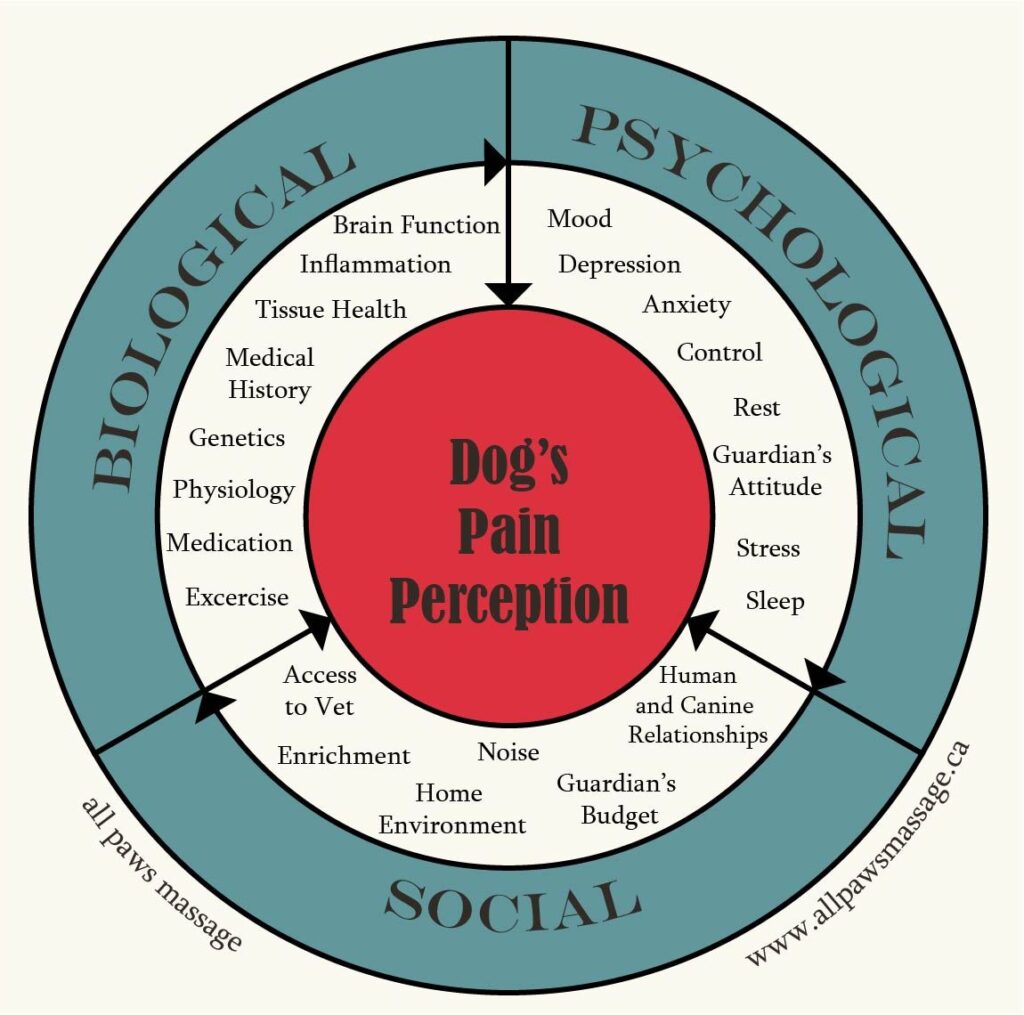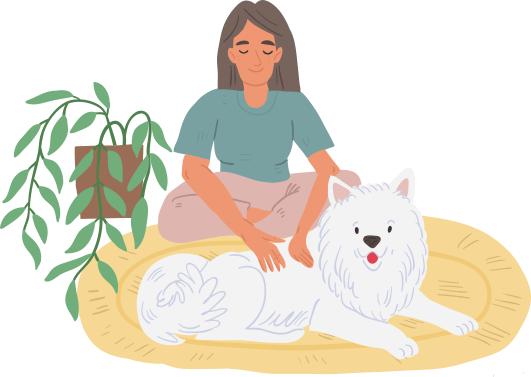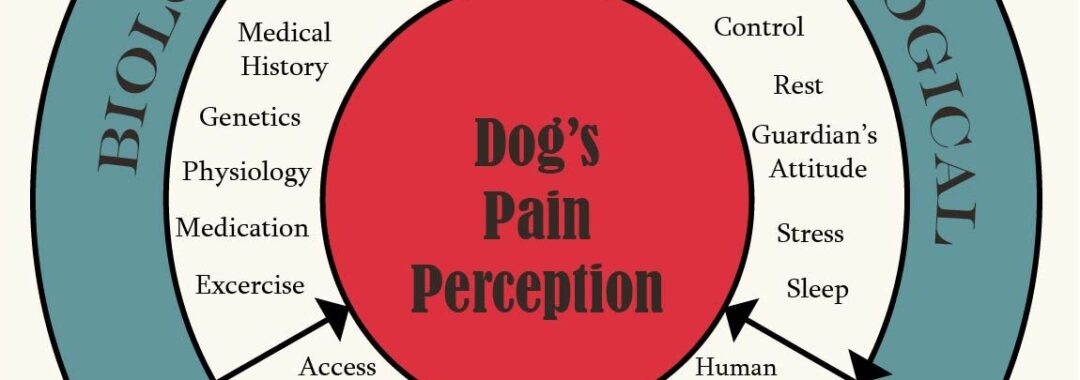What is the Biopsychosocial Model of Pain?
This model postulates that pain perception is influenced a dynamic interaction among and within three aspects: biological, psychological and social. Each one of the three aspects is an important contributor to the level of pain perception and altering one aspect will have an effect one the other two.

The Three Aspects of the Biopsychosocial Model:
BIO
this is the physiological aspect of pain and the medication to help control it. This is something that needs to be discussed with your veterinarian, if there is any suspicion that your dog might be experiencing pain.
PSYCHO
this is the psychological aspect of pain. Depression, anxiety, phobias, OCD behaviours can be a huge contributor (sometimes even the cause) to an increased pain perception. Our dogs can and do suffer from mental health issues and those need to be addressed by a veterinary behaviourist as often medication might be needed.
But this area is also where we, as guardians, can have a huge impact by making sure that our dogs are doing well mentally:
- By providing them with sleep and rest
- By keeping them under threshold for stressful triggers
- By providing mental stimulation
The psycho aspect also involves us: in how we deal with our dog’s changing body and abilities, and how we relate to our dog.
- Do we acknowledge them for the dog they are (not for the dog they used to be or we hope they would be)?
- Are we sad/stressed/depressed/overwhelmed by our dog’s condition?
- Are we limiting our dog because of our own fears or are we pushing them to hard out of denial?
These are questions we need to ask ourselves and seek support if necessary, as our own “headspace” will have a huge impact on our dog.
SOCIAL
this is how our dog relates and interacts with people, other dogs and the world around them. As guardians, this is where we have the biggest impact and ability to help our dogs.
Boredom in particular leaves your dog’s brain hyper focused on the pain stimulus, which leads to a lowered mood which leads to a lower threshold for pain – it’s a vicious circle.
How Canine Enrichment Can Help
So I challenge you to keep your dog, even (and especially) your senior dog, engaged and mentally stimulated:






If their mobility is restricted:




Warding off boredom and keeping them mentally engaged will do wonders for both mind and body!
How Massage Can Help

Animal massage affects all 3 aspects of this model:
- Bio: The many physiological benefits of massage
- Psycho: Release of feel good hormones which improve mood
- Social: it’s a fun outing and social interaction during which all attention is on them!
Use the Daily Dog Wellness Tracker to monitor your dog’s daily activity and comfort
